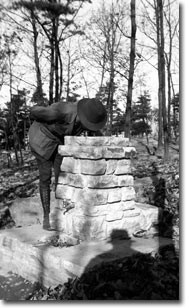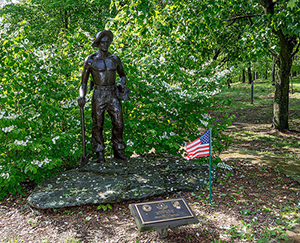 The Civilian Conservation Corps
The Civilian Conservation Corps
The early 1930s was a dark time in American history. The Great Depression was in full swing. Millions of people were unemployed, hungry and struggling to survive. An estimated 12 million to 15 million people were out of work – that’s one in every four workers!
In an effort to create jobs for some of the millions who were unemployed, President Franklin Delano Roosevelt developed a new program in 1933, called the Civilian Conservation Corps, or the “CCC.” In addition to creating jobs, the purpose of the CCC was to help restore the nation’s struggling natural resources. The CCC recruited young, unemployed men ages 17 to 25 to live and work in camps supervised by the U.S. Army. These young men—nicknamed “CCC boys”—went to work building parks, restoring forests, planting trees, fighting forest fires and restoring watersheds across America.
 The Local “CCC Boys”
The Local “CCC Boys”
One of the nation’s first CCC camps was located in Frederick County, Maryland, just a few miles from Gambrill State Park. In the spring of 1933, approximately 200 “CCC boys” arrived at the camp, ready for work. For the first seven months, the “boys” lived in army tents, while they worked on constructing a mess hall, barracks and other buildings for the camp. Once they finished building the camp, the “boys” went to work on a number of projects throughout the area.
The Development of Gambrill State Park
A top priority for the local CCC camp was the development of Gambrill State Park. When the “boys” began working at Gambrill in 1933, there were no roads, no picnic areas, no buildings and no water supply. By 1940, the “CCC boys” managed to build essentially all of the facilities that exist in the park today. They built the roads, three stone overlooks, three wooden picnic shelters, the Tea Room, the ranger’s residence and part of the nature center building. Without the CCC, Gambrill State Park would not exist as it is today.